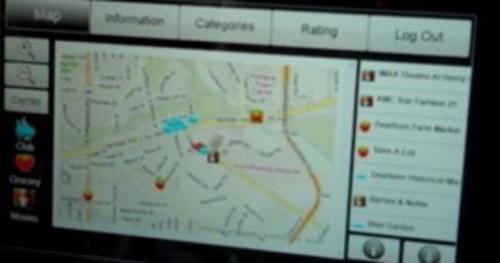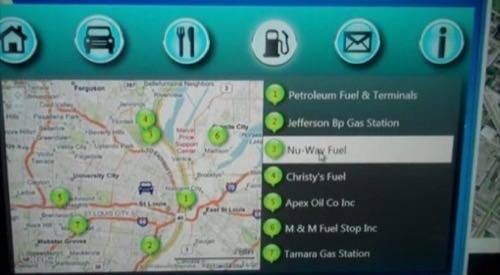When we talk about mobile apps today, chances are that we are mostly talking about apps for cell phones and – maybe – tablets. The latest trend in mobile apps, however, is apps for cars. One of the companies leading this trend in the U.S. is Ford, which just unveiled a number of apps that students at the University of Michigan created on top of Ford’s platform.

Making Mobile Apps Work at 70 mpg
Earlier today, we got a chance to talk to K. Venkatesh Prasad, the group and technical leader of Ford’s Infotronics Research and Advanced Engineering team. Ford unveiled its SYNC AppLink technology for controlling Android and Blackberry mobile apps through Ford’s voice-driven SYNC interface last month, but as Prasad told us, the company is obviously also looking at mobile apps that are developed specifically for the car.
Cloud Computing in the Commute
As Prasad stressed when we talked to him, developers have gotten very good at developing apps that work well at 0 mph, but interfaces that also work well at 70 mph are still in their infancy. Apps that run in cars obviously have to overcome a number of issues – especially with regards to safety – that aren’t normally an issue for developers of mobile apps.

In order to tap into the creativity of students who grew up with mobile apps and social networks, Ford, together with Microsoft and Intel, teamed up with the University of Michigan and the university’s professors and Ford’s engineers taught a 12-week course entitled “Cloud Computing in the Commute.” The students developed their apps using a Ford Fiesta with a built-in touch screen running. The software platform for these projects was Windows 7 and Microsoft’s Robotics Developer Studio. On the cloud side, the students used Microsoft’s Windows Azure platform.
Over the course of the semester, these students created six different projects, ranging from a gesture-driven Waze-like app that allows drivers to alert others of traffic jams, accidents and police cars along the road, to a ride-sharing app that taps into Facebook and an app that automatically uploads your fuel economy data to a cloud server. Some of these apps use the natural user interface capabilities of Windows 7 for voice recognition, while others use gestures that drivers can draw on the car’s built-in screen.

Caravan Track
From these six app, Ford, Microsoft and Intel chose Caravan Track as the best app. Caravan Track allows clusters of vehicles traveling together to track each other during the drive – which sounds like a great application for anybody who has ever been on a road trip with more than one car. The app uses vehicle telemetry to track each vehicle, maps routes and sends alerts about stops and road conditions. The winning students will take a car that runs Caravan Track on a two-week road trip from Michigan to the Maker Fair in San Mateo on May 22.
Cars: The Next Big Market for Mobile Apps?
Even more so than just these apps, it’s exciting to see how cars are finally becoming a part of the mobile app ecosystem. While there are still many user interface issues to deal with, systems like Ford’s SYNC and the Windows 7 platform used by the students in Michigan could potentially give developers the same kind of resources and computing power as a modern desktop machine.
Today, most car buyers assume that their experience with the car won’t change much over the next few years of ownership. Once we get to the point where a lot of cars can run mobile apps however, we might see regular software updates that could greatly change the user experience at intervals that are currently unheard of in the automobile industry where upgrade cycles are usually measured in years.









